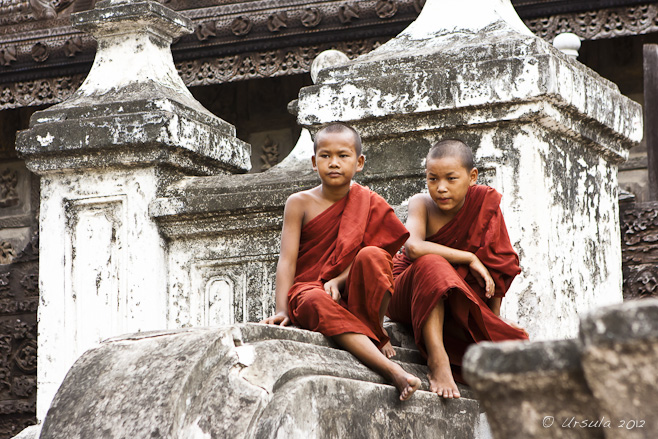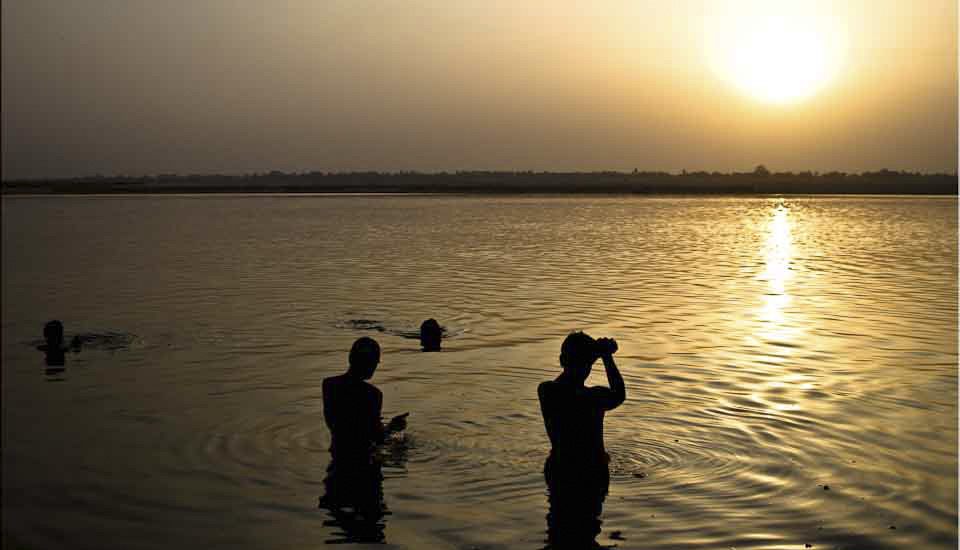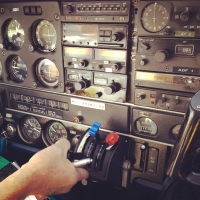
Little Novice
Sitting on the banister: Shwenandaw Monastery, Mandalay
Temples in Southeast Asia are living places.
This is certainly true in Myanmar. The many Buddhist temples I visited there were architecturally beautiful – and different, with no two exactly the same. But what I generally find more interesting is the life – both sacred and secular – within and around them.
On my first afternoon in Mandalay, I and the nine other photographic-tour participants, under the guidance of Photographer Karl Grobl and local guide MM, visited three distinctly different religious buildings.
Our first stop was the wooden Shwenandaw Kyaung or Golden Palace Monastery. Built in traditional Burmese style in the 19th century by King Mindon Min (reigned 1852-1878) as a palace, this graceful teak building is covered, inside and out, with carvings. Originally, these carvings were coated in gold (hence the name), but tropical weather has taken its toll: no gold remains on the outside, and many of the carvings are worn beyond recognition.
It is still an elegantly beautiful place – with a number of cheeky little imps running around in their novice robes, waiting to meet visitors.

On the Stairs
Shwenandaw Monastery

Deva on the Door
Shwenandaw Kyaung Monastery is known for the magnificent teak carving adorning its doors and walls.

Devas and Imps?
The very young novices are a contrast for the very old building. Shwenandaw Monastery

Little Angels
I can’t help but wonder what their stories are.
In Thailand, many young boys are enrolled in the local monastery, not because of any particular religious inclination, but because their families cannot afford to send them to school otherwise (e.g. Little Angels). Apparently, it is a similar story in Myanmar, so I was very curious about the young novices we met: what were their lives really like? The life of a novice is not easy, but perhaps it is easier than living in a poor rural household.
At the gates of the temple, it was getting busier, with people coming and going; many stopping in to the monastery grounds make offerings.

At the Gates
A woman pauses at the gates of Shwenandaw Monastery.

Cycle Man
This man was waiting to chauffeur his friends home after their visit to Shwenandaw Monastery.

Three Little Maids
I couldn’t help but think of The Mikado as I made this photo of three women giggling.
Our second stop at The Kuthodaw Pagoda or Maha Lawka Marazein Paya (Royal Merit Pagoda) was a complete contrast. Although it was built during the same period, it served a very different purpose. King Mindon Min was concerned about the invading British and what their presence in Burma would mean for Buddhist teachings.

Saungdan (covered entry) to the World’s Largest Book
The Kuthodaw Pagoda or Maha Lawka Marazein Paya
The Kuthodaw Pagoda is called the World’s Largest Book. King Mindon had the entire 15 books of the Tripitaka, the sacred scriptures of Theravada Buddhism, inscribed in gold on huge marble tablets. Each of these 729 double-sided slabs is housed in its own small stupa or kyauksa gu.

Pali Scripture
Each tablet is five feet tall and three-and-a-half feet wide; scribes took three days to write the words on both sides, then stonemasons chiselled 16 lines a day, before painters filled with the script with gold.

Kyauksa Gu
Rows of stone-inscription caves, the white stupas housing the scriptures.

Afternoon Storms
Weather threatens the domed stupas of Kuthodaw Pagoda.

Lone Monk
… between the stupas of Kuthodaw Pagoda.

Family Group
An extended family gathers in a sheltered hallway of Kuthodaw Pagoda.

Auntie
Saungdan (covered hallway), Kuthodaw Pagoda

Souvenir Seller
Tourists wanting a souvenir, or worshipers looking for an offering; someone will take care of you!

Spire
A last look back at the sky over a Kuthodaw Pagoda stupa.
It was getting dark as we arrived at our last temple-stop of the day, but fortunately the rains held off. We positioned ourselves on the upper balcony of a modest monastery, and waited as a young monk struck a metal bong repeatedly with a heavy wooden striker. Quietly, walking barefoot, maroon-robed monks emerged from all directions, and lined up to enter the prayer hall.

Strike the Gong
A call to evening prayers rings out across the monastery.

Silent Prayers
Noiselessly, maroon-clad monks line up …

Like Ghosts
… and silently enter the prayer hall.

Evening Prayers
An hour of chanting in Pali before bed…

… turns little imps …

… into little angels.

I am seldom bored visiting temples: as I said before, architecturally, they are all very different.
And, they are busy places.
These pictures are just a sampling of the life within them.
Mettā!
Pictures: 13September2012



























.png)


Well written w/a good mix of photos
Beautiful Ursula – I’m glad you remember the names of all the pagodas (saves me searching for them!!)
Where is your next trip/
Hi Darrell!
Thanks for “visiting”. Actually, I can’t remember the name of the third one that day… Shhh! Don’t tell anyone.
These days we are “road tripping” in Australia a fair bit – off the Byron at the end of the month. Then, off to North America to escape the antipodean winter.
I hope we cross paths again one day – Pushkar in November? 😀
thanks for posting this Ursula.
Metta is a great word 😉
Michael
Thanks, Michael! (And thanks for sharing this with Peter.) 🙂
Fantastic as always, and they are all so different yet the same…love it. I’m in Byron/Ballina on the 23/24th for a quick weekend of business… maybe a coffee if you’re there at the same time 🙂
Thanks for looking in, Signe. Like ships in the night, we will just miss each other!! 🙁
splendid series Ursula and thanks yoor your report. I have been there in 2001 a long time ago. Greetings Dietmut
I’m glad you enjoyed the post, Dietmut. I’m sure things have changed very little since your visit! 🙂